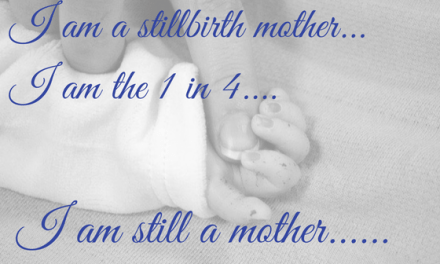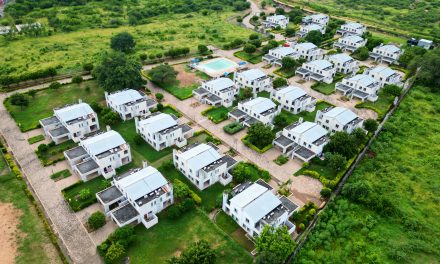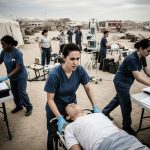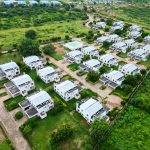Every disaster has two narratives: one of ruin and one of resilience. At the heart of that resilience are nurses. From treating mass casualties following an earthquake, treating evacuees because of a flood, to coordinating harried hospitals in the midst of a pandemic, nurses are at the forefront of emergency response.
Their job goes beyond healing. They give stability when things fail, reassurance when panic occurs, and hope when communities are ruined. During crises, nurses are not only healers but also leaders, coordinators, and human rights advocates for oppressed peoples.
What a nurse does in a disaster is the topic of this article, which describes what nurses do during emergencies, the skills that enable them to do so, and how their actions impact disaster-affected populations.
What Does a Nurse Do in a Disaster?
When it’s an emergency, every minute matters. Nurses act at once to:
- Quickly evaluate patients and determine who requires immediate assistance
- Administer first aid and trauma treatment, from halting bleeding to fixing fractures
- Coordinate patient movement in overwhelmed hospitals, field clinics, or shelters
- Assist with the emotional health of patients who are anxious or bereaved
In a few words, nurses are caregivers and organizers. They fill in the gaps between the patients and the rest of the medical response system to make sure everyone is taken care of.
What Are the Phases of Disaster Nursing?
Disaster nursing is not over when the storm rages down or the earth ceases its tremors. It goes through three significant phases:
Preparedness
Nurses prepare for the eventuality of emergencies, go through simulated disasters, and make sure the equipment needed is available. They also educate the public through first aid classes or health education campaigns.
Response
This is the high-pressure phase. Nurses conduct triage, clean and dress wounds, prevent infection, and stabilize patients until more advanced care can be accessed. In collaboration with physicians, paramedics, and relief workers, they ensure care is maintained even in precarious situations.
Recovery
After the initial danger has passed, nurses continue to be a significant force. They continue to monitor survivors’ health, treat long-term complications, offer mental health care, and assist in building healthier, better-prepared communities.
How do Nurses Triage Patients in Emergencies?
Imagine a hospital hallway with dozens of injured people after a bus crash. Nurses must rapidly decide whom to treat first. That’s triage.
The process typically includes:
- Checking airway, breathing, and circulation first
- Dividing patients into categories: critical, urgent, delayed, or minor
- Reassessing from time to time, since patients’ conditions are likely to change rapidly
- Coordinating with physicians and emergency personnel to transfer patients when needed
Triage is not easy. It means making agonizing decisions, but it’s the best way to save the largest number of lives.
What are the Most Important Skills in Disaster Nursing?
Nurses in disaster situations must be creative problem solvers. Key skills include:
- Infection control: Use of PPE and disease prevention in crowded shelters
- Respiratory care: Providing oxygen and maintaining airways if breathing is impaired
- Psychological first aid: Soothing patients, reassuring them, and avoiding panic
- Flexibility: To work in field hospitals, tents, or even openly with minimal facilities
Small equipment with a major impact. For instance, instruments such as Bandage Scissors or Lister bandage scissors enable nurses to trim dressings rapidly and safely without incurring injury while accelerating care.
How Do Nurses Collaborate with Other Teams?
Disaster relief is never a one-man show. Nurses work with:
- Emergency medical services to stabilize patients and have them safely transported
- Public health agencies for infection control, vaccinations, and access to clean water
- Government and aid groups to deliver supplies and coordinate shelters
- Community leaders to provide culturally sensitive and efficient assistance
This collaboration keeps care in order and makes sure resources are maximized.
What Are the Challenges Nurses Encounter in Disasters?
It is never an easy job working in disaster areas. Nurses typically contend with:
- Shortages of medical materials and personnel
- Overnight shifts in unsafe or fatiguing situations
- Emotional overload from witnessing large-scale injuries or fatalities
- Chaos when various agencies attempt to coordinate simultaneously
- Shortage of specialized training for massive disasters
Don’t let all this go for nothing; nurses always rise to the challenge with grit and empathy, demonstrating just how irreplaceable they are in crises.
How Can Nurses Be Better Prepared?
Preparation is the key to dealing with disasters effectively. Nurses can promote preparation by:
- Participating in simulation exercises and refresher training
- Learning modern triage methods and disaster management procedures
- Having basic personal emergency kits
- Remaining updated on basic tools such as scissors, dressings, and PPE
- Lobbying for better disaster response policies in health facilities
- Better preparation means more lives are saved where seconds count.
Why Is Support for Mental Health Important?
Disasters do not only inflict physical destruction. They tend to leave emotional scars. Nurses have a big part to play in these by:
- Providing reassurance and a listening ear to patients
- Recognizing early on the signs of trauma, PTSD, or stress
- Referring survivors to mental health providers or counseling
- Supporting themselves to avoid compassion fatigue and burnout
Taking care of mental health can help whole communities heal more completely.
How Does Geography Influence Disaster Nursing?
A Florida nurse might encounter hurricanes, whereas a Nepalese nurse would encounter earthquakes. Geography determines the kind of training and preparation that is needed. For instance:
- Coastal areas: Emphasis on flood protection and waterborne disease control
- Seismic areas: Stress trauma care and rescue preparedness
- Pandemic hotspots: Enhance infection prevention and vaccination drives
- Rural regions: Prepare for restricted hospital access and independent care
This implies disaster nursing is never “one size fits all”; it is responsive to local threats.
Conclusion
Nurses are the pillars of disaster relief. They introduce medical aid, emotional comfort, and order to some of life’s most disorganized circumstances. Even with shortages and burnout, their commitment means that communities do not just survive but start to heal.
With improved training, collaboration, and readiness, nurses will continue to be the reliable hands and voices of reason in future emergencies, regardless of their size or surprise.
FAQs
Why is triage necessary in disaster nursing?
It prioritizes patients so the most ill get treated first, to create maximum survival in a limited resource situation.
What minimum equipment should nurses carry in disaster response?
PPE, wound dressing, and simple things like bandage scissors are essential for safe, fast treatment.
How can students of nursing prepare themselves for disaster situations?
Drill with them, take practice first aid, and learn mental health support skills so that when they face real emergencies, they feel more sure.

























